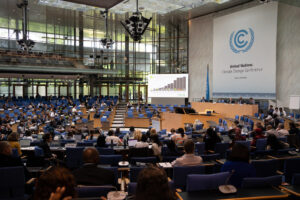Today, civil society organisations have sent out a letter to leaders of the European Commission to call on them to adopt financial investment rules which will benefit both the people and the environment. The letter is part of a wider effort from civil society to make sure that “sustainable” finance does not end up harming people or the environment.
The European Union is currently in the process of changing financial sector regulations in an attempt to green the multi-trillion euros industry. A key element in this process is the design of a classification to identify what is sustainable and what is not, aka “the sustainability taxonomy”.
The objective of better identifying which companies, investments and assets are sustainable is much needed, and this should hence focus on all three pillars of sustainability, i.e. economic, environmental and social elements.
Past experiences with carbon markets and in particular carbon offsetting projects have shown the disastrous consequences of disregarding the social and human rights aspects of financial investments. Turning a blind eye to human rights poses high risks for investors, as shown for example by the Barro Blanco hydrodam project which lost its CDM registration, and thus its clearance to issue and sell carbon credits, after severe Human Rights infringements were exposed. This can be avoided in the context of climate finance by making social and human rights an integral part of the sustainability taxonomy.
Sustainability for people and planet
Specific criteria need to be included in the sustainability taxonomy to avoid that sustainable-labelled activities end up harming people, and to guarantee benefits for local communities as well as the environment. The current proposal by the European Commission unfortunately does not yet sufficiently address this. The following two types of provisions are still missing from the text but are key to safeguard both people and the environment.
First, the consultation of local stakeholders and the possibility for affected people to seek recourse against a project are highly important conditions for the implementation of a successful mitigation project. The absence of such mechanisms had dramatic consequences for local people affected by the Barro Blanco hydrodam project, as well as numerous other climate mitigation actions. Only activities which are implemented after a meaningful stakeholder consultation (read more about what a meaningful consultation is in our guide here), and which have set out and communicated a clear process through which affected stakeholders can seek recourse, should be eligible to carry the label “sustainable”.
Secondly, some activities should be subject to additional safeguards, if they are known to be potential sources of conflict or harm, e.g. drawing from the recommendations of activity specific Commissions such as the World Commission on Dams. For example, given the negative impacts of hydropower installations, small hydro-projects should assess in details the impact of the project on land-use, the potential release of methane through the decomposition of organic matter, and the potential destruction of terrestrial and aquatic ecosystems.
“Green” must benefit the people
The Commission’s classification will play an important role in designing future labels and standards, including an EU Green Bonds Label which will have an impact far beyond the Union’s borders. Activities identified as “sustainable” in this classification are likely to also be recognised as “green” in the context of defining what can and cannot be financed with green bonds. Currently, the lack of standards and recognised definition of what is “green” has led to hundreds of millions of dollars flowing to unsustainable projects, including coal power plants.
The use of funds labelled as “green” for such investments is unacceptable. And so is the attribution of a “sustainable” label to activities which harm people, such as large hydropower plants which could be included in the list of eligible projects.
The Commission’s proposal could mark a significant turn in the European and global green finance landscape by providing a clear signal of what can be considered sustainable and what cannot. This will require more inclusive selection criteria to seriously take into account social and human rights risks, as well as clear requirements for local stakeholder consultations and a grievance mechanism in mitigation projects. Without them, the new rules risk creating more harm than good by allowing greenwashing to continue with a brand new EU label.










